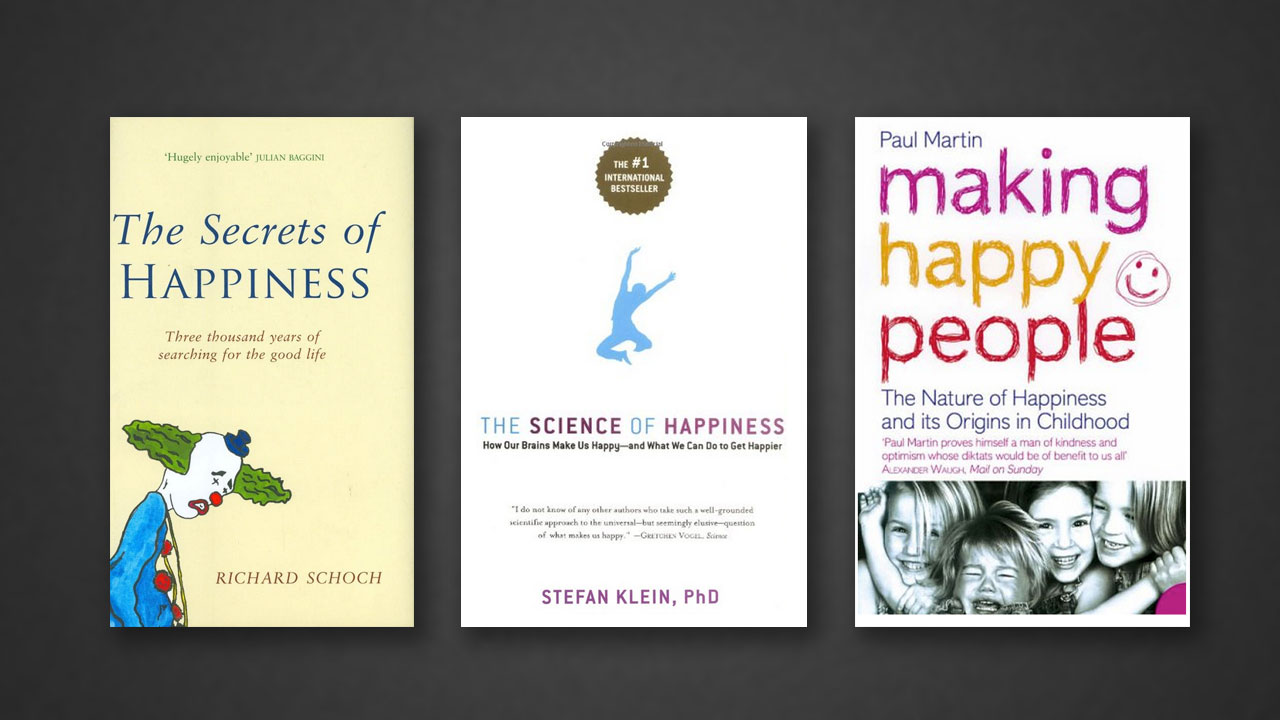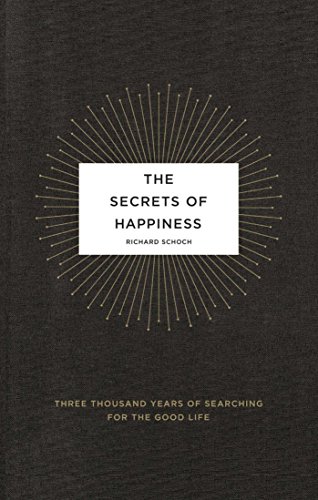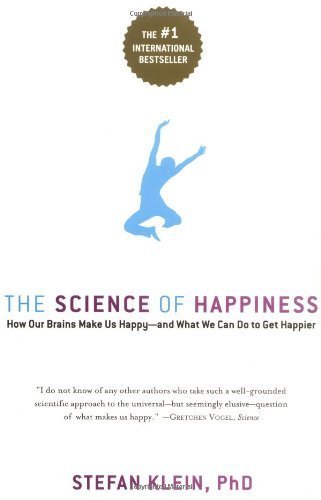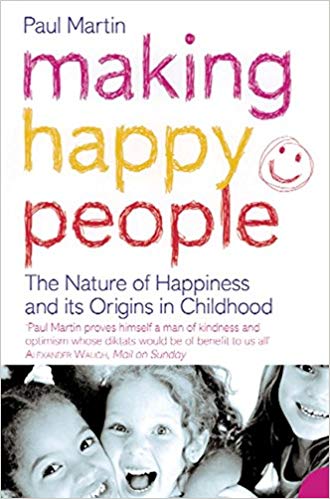Happiness: The Means or the End?
The Secrets of Happiness: Three Thousand Years of Searching for the Good Life
Richard Schoch. 2007 (paperback). Profile Books, London. 288 pages.
The Science of Happiness: How Our Brains Make Us Happy—and What We Can Do to Get Happier
Stefan Klein. 2006. Avalon Publishing Group, Marlowe & Company, New York. 320 pages.
Making Happy People: The Nature of Happiness and Its Origins in Childhood
Paul Martin. 2006 (paperback). HarperCollins, Harper Perennial, London. 320 pages.
Social scientists have studied negative emotions—anger, depression, low self-esteem, suicidal tendencies and their ilk—for years. By contrast, happiness is a fairly new area of research, as a recent wave of books shows.
The three offerings reviewed here try to shed light on happiness from varied perspectives. We ask: What can we learn about the elusive quality of happiness to help us understand and attain more of it? Are there keys to happiness?
The Secrets of Happiness
Richard Schoch’s The Secrets of Happiness is a good place to start. A professor of history and culture at the University of London, he examines the pursuit of happiness during the past three millennia, particularly in philosophy and religion, and asks what lessons can be learned for today.
Happiness is difficult to define, and Schoch asks some hard questions. Circumstances often conspire to make life difficult, even miserable: whence happiness in such cases?
Warning that there is no one secret of happiness, only secrets of happiness that vary with each individual, he writes that “the statement ‘I am happy’ (or ‘I am unhappy’) carries no objective meaning—that is, independent of the person, the subject, making the statement—because it acquires meaning only in a context” (original emphasis throughout). According to Schoch, it follows that “all attempts to measure happiness are ludicrous, as if it were some mass-produced commodity that we could stockpile in times of lazy contentment and then raid in moments of urgent need. . . . So we ought to be less concerned about ironclad definitions, about fitting happiness into precise categories, and more focused on simply making it happen. . . . Whatever it is about, it is about a few constant things: pleasure, desire, reason and suffering.”
Further, he maintains that routes to happiness have always been local—different things for different people at different times—and invites us “to be inspired by the great ideas in history about happiness.”
Schoch’s tour starts with English philosopher Jeremy Bentham (1748–1832), who promoted the principle of “the greatest happiness of the greatest number” as determined and managed by enlightened government. But Bentham’s theories have some difficulties. First, happiness cannot be quantified with any precision. Second, Bentham viewed pleasure as the best measurement of happiness, ignoring the moral dimension: What of conscience and character? How do these fit into the happiness equation?
Bentham’s disciple John Stuart Mill (1806–73), at first in full agreement with his mentor, later softened his approach, writing that people become happy “who have their minds fixed on some object other than their own happiness; on the happiness of others, on the improvement of mankind, even on some art or pursuit, followed not as a means, but as itself an ideal end. Aiming thus at something else, they find happiness by the way.”
Next Schoch takes us back to Epicurus (ca. 341–271 BCE), whose name has entered the English language in the word epicurean, someone who is devoted to sensual enjoyment or, more specifically, one who takes great pleasure in fine food and drink. Epicurus has, however, been much misunderstood, according to Schoch. The true Epicurean was restrained and self-controlled, accepting “negative pleasure” as well as “positive pleasure”; that is, “not eating because I am full, not drinking because my thirst is quenched,” and so on.
The theme of focusing away from self and desire, common in Eastern religion and philosophy, is the next exploration. Yoga, for example, teaches that its three ways—knowledge, duty and loving devotion—are what determine happiness, not satisfying physical and material desires. Buddhism maintains that “life is suffering” and propounds the law of karma, by which “everything has a cause.” So to remove suffering we must remove its cause: desire. “Nirvana is an experience of not ;not being chained to desire, not having attachments and, therefore, not suffering.”
In his lightning journey through philosophy and religion, Schoch includes the Roman Catholic saint Thomas Aquinas (1224–74) as one who had something to say about happiness—though strangely, Christ’s Sermon on the Mount and its eight “beatitudes” (the Latin root of which means “blessed” or “happy”) is little more than a footnote to the discussion of Aquinas’s writings. (For a more thorough treatment of this subject, see “A Richer Vessel” and “A Platform of Truth.”)
Schoch notes that the Roman Catholic theologian’s immense but unfinished summary of theology (Summa Theologiae) says happiness “is the ultimate end of human life,” “does not consist of earthly goods,” “consists only in the vision of God,” “has requirements,” and “is possible only in heaven.”
He understands Aquinas to mean that everlasting happiness or “eternal beatitude . . . is the true end of human life,” because “God created us to be happy.” But what does this mean? According to Schoch, Aquinas is referring here to the beatific vision: “This sense of drawing near to God is the core of Aquinas’s vision of happiness.”
The next stop is the mystical branch of Islam, Sufism. Like other mystic, ecstatic religions, Sufism holds that each individual finds his or her own path to enlightenment by merging with something beyond self over a long period of training. But Schoch concludes that “the mystic view of happiness is elitist. It’s not that the mystics are deliberately seeking to prevent most of us from becoming happy, but that true happiness can come only to those select few who are versed in the ways of imagination and intuition.”
Moving on to Stoicism, he suggests that “when we feel that too much of what we face day after day is beyond our control, we might well take heart in the Stoic teaching that happiness resides only in those things we can control: our thoughts, intentions and outlook.” But does Stoicism show the way to happiness? The famous Stoic Seneca was saved from obscurity by Nero’s mother, Agrippina, yet was forced by her tyrant son to murder her and then justify it to the Senate. Seneca apparently employed Stoic resignation to assist him through the ghastly dilemma of this task, only to be later ordered by a paranoid Nero to take his own life. It’s said that he faced what transpired to be a slow and painful death with neither fear nor sadness.
This may sound like a strategy for avoiding pain, but where did Seneca’s happiness come from? According to Schoch, this philosopher “has revealed that the secret of happiness (or at least a secret) is the power of the rational mind to triumph over adversity.”
Finally, surveying Judaism, Schoch grapples with an obvious dilemma: we must contend with difficult and painful circumstances to get a handle on happiness. He brings us now to the age-old question: if there is an omnipotent God, why does He allow men to suffer?
In the biblical story of Job, God not only hides His face but, as Schoch sees it, “almost on a whim” allows Satan to visit extreme suffering on the innocent man. Covered in painful, oozing boils, bereft of his family and worldly goods, and condemned by his friends, Job cries out “Why?” God ultimately reveals to Job how great He is, and how superior His thinking is, above that of even the wisest and most perfect of men. Schoch finds in this story “an almost cosmic definition of happiness. . . . Through this parable of suffering we see happiness in an unaccustomed light—as bound up in our search for the meaning of life when life seems most meaningless.”
He writes, “God’s indifference is not a disapproving judgement upon us, not a punishment or sign of his anger. It is, rather, part of his divine nature: he is the God who hides. And he hides for a reason that we have come upon again and again—our freedom. To be good we must choose to be so; but to choose, we must be free.” But again, is this about happiness or about surviving through misery? Schoch believes it is the former, that it is this freedom to choose to be good that gives us the “freedom to forge our happiness.”
In the end, he proposes that “the happy life is . . . one of ideals, of symbols of something higher, greater, deeper and vaster than ourselves. . . . We want to envision something that surpasses our selfish desires, that outstrips merely personal goals; and then we want to attain it.”
Schoch’s readers could be forgiven for concluding that his book might have been better titled Secrets of Coping with Unhappiness: Three Thousand Years of Avoiding the Bad Life. He succeeds well in demonstrating how tenuous any grip on happiness has often been, even among those who practiced the strategies about which he writes.
The Science of Happiness
In the most scientifically based of the three books, The Science of Happiness, German scientist and journalist Stefan Klein equates happiness primarily with pleasurable feelings. “We now know a great deal about what happiness is,” he writes, adding that “brain scientists have begun to direct their interest toward positive feelings, and they are making rapid and impressive progress. . . . New imaging techniques enable us to observe the brain as it thinks and feels.” He posits that “our brains have a special circuitry for joy, pleasure, and euphoria—we have a happiness system.” This circuitry works for our well-being and longevity when we’re happy, but it affects our physical and mental health adversely when we are not.
“What kind of feeling is happiness? . . . We all chase after this sensation, but it comes over us when we least expect it—only to disappear before we have a chance to enjoy it fully.”
This circuitry is not as hardwired as scientists once thought, however; the adult brain continues to change as we learn things. Although a predisposition for being positive or negative is calculated to be around 50 percent genetic, genes are not destiny. The brain can, with our active assistance, actually reprogram itself. In fact, Klein assures us, “no system in nature is as capable of change as the human brain.” Growth and connections take place constantly as neurons communicate through linking synapses. As we develop habits or repeat certain behaviors, the brain recognizes these as important and strengthens them, while allowing transitory, unimportant details to fade and die. Thus we can build self-reinforcing positive or negative thought patterns, and these strong physical synapse connections strengthen habits and addictions.
Klein illustrates that, like a muscle, the brain can be trained or retrained, so it is possible for negative feelings or habits to be brought to heel. Understanding this is vital for the health of those who suffer from negativity and depression, or who are trying to kick an addiction. Otherwise, both the brain and the body are locked into a vicious circle that affects health, the ability to think, and the activity and even the size of the brain itself. In Klein’s terminology, “if you want to sow a new flower bed, you first have to pull out the weeds.”
The book’s most valuable message is that we can steer our inborn drives and feelings in an ordered way; we can use the mind as a powerful tool for our own good if we know how to do it and have the will. Knowing ourselves and understanding what really gives us happiness will increase our likelihood of success.
Klein’s book is well researched and organized: we can learn much from it. But is the scientific measurement of pleasurable feelings really an adequate basis for understanding happiness and how to attain it?
Another difficulty with Klein’s approach is that many of the important distinctions between human and animal are minimized under the assumption that evolution is the all-encompassing cause. Thus he considers altruism, by no means a common human trait, as “not so much an achievement of human culture as an accomplishment of the neocortical brain of which other animals [such as apes] are also capable.” But his argument breaks down, because biological altruism can be found among so many species, including ants and bees, to which biologists don’t ascribe the feelings or brain power of higher mammals. This leads one to conclude that this “accomplishment” must be rooted in instinct.
By taking an ultimately materialist approach to happiness, Klein separates his subject from its moral context.
Making Happy People
English psychiatrist, behavioral biologist and science writer Paul Martin tackles the subject of happiness in a forthright and practical style in Making Happy People. His emphasis is on raising happy, successful children.
“In every culture where researchers have posed the question, the majority of people say they regard happiness as their ultimate goal in life.”
“Where does happiness come from?” he asks, and then points to a number of factors, of which the most important is connectedness via personal relationships—with a focus on quality rather than quantity. Martin devotes a chapter to being connected and reminds us of the value of some old concepts that once seemed the norm: “neighbourliness, community spirit, social cohesion, citizenship and trust.” He laments not only the decline of these values in contemporary America and Britain, but their replacement by excessive TV viewing and other selfishly oriented pastimes. The connected relationship that has the greatest influence on happiness is marriage, which beats both cohabitation and living alone. Better mental and physical health and higher incomes are among marriage’s statistically proven benefits, he says.
Martin invests three chapters to contrast “authentic ingredients,” “snares and delusions” and “wealth and celebrity.” In the “authentic” category, he raises the subject of genes. He disputes the notion that everyone has his or her own genetic “set point” for happiness, noting that even if this is so, all sorts of positive and negative life events (marriage, divorce, parenthood, bereavement, promotion, job loss) have a huge impact that must shift the initial set point. Another authentic ingredient is geography—important because people are happier in nations where they have more control over their circumstances, and where the economy is stable and there aren’t huge differences in incomes. Health, sleep and exercise, education, religion and, yes, looking good, all count as ingredients that Martin contends will affect how happy or unhappy we are.
Comfortingly, he says, even when we have not been endowed with the best of health or looks, a happy and positive disposition still goes a long way, and happiness itself improves the impression we make on others. Religious belief is also generally beneficial, provided there is sincere belief and genuine devotional activity.
The chapter on “snares and delusions” attacks “mindless pleasure.” Pleasure is good in small doses but, quoting Benjamin Franklin, Martin cautions: “Happiness is produced not so much by great pieces of good fortune that seldom happen as by little advantages that occur every day.” Also, in part because of the increased wisdom that comes with age, the young are not necessarily happier than the old. Nor is there any known link between intelligence and happiness.
And wealth? “Happiness is much more a product of psychological wealth than material wealth,” by which he means “attitudes, experiences and personal relationships.” In fact, wealth and celebrity have surprisingly little lasting effect on happiness, and those who seek them are never satisfied: they get used to what they have and their expectations rise, says Martin. Therefore, chasing wealth or celebrity at the expense of things that really make for true and enduring happiness often leads to unhappiness.
Martin cautions that “happiness is a subtle, multifaceted beast composed of thoughts and feelings, which is why there is no single, golden key to happiness and never will be.” He insists, however, that we should not be embarrassed to make it a top priority. Among his concluding “top ten tips” are ones that recur in different guises in all three books: personal relationships and connectedness, focusing outwardly on others rather than inwardly, not chasing wealth and celebrity, and—number one on his list—“[taking] a broad, long-term view of happiness: there is much more to it than immediate pleasure.”
In Summary
These three books provide insights into understanding happiness from three very different angles.
Schoch’s survey of the lessons we can learn from philosophy and religion demonstrates well that science and pop psychology don’t have all the answers to the happiness question; yet the power of philosophies and religions in this regard is often shown to be tenuous and elusive. His book is useful for reminding us that in coping with life, seeking happiness is only one side of the coin: we must also deal with suffering and disappointment. In fact, Schoch suggests, suffering may even be one of the pathways to happiness. He proposes that “to live as if suffering were an affront to our humanity and a barrier to our happiness is to miss the point of what it means to be human and happy.”
Klein’s book is the most heavily based on brain and mind research. It is lucid and complete, yet never bogs us down in technicalities. Sadly, it suffers from a determinist cast and therefore doesn’t consider that there may be more to happiness than can be physically measured or explained.
The straightforward practicality of Martin’s book makes it useful reading for anyone endeavoring to raise and instruct well-balanced and happy people.
In the face of these three books and their disparate approaches, Klein’s concluding statement rings true: “We are six billion people, and there are six billion paths to happiness.” Schoch concludes, “Our life is an ever striving, and we call the striving happiness.” Aiming directly at happiness, then, we are likely to miss it. Happiness is neither an end nor a means, but rather a product of living an authentic, wise and outgoing life.




